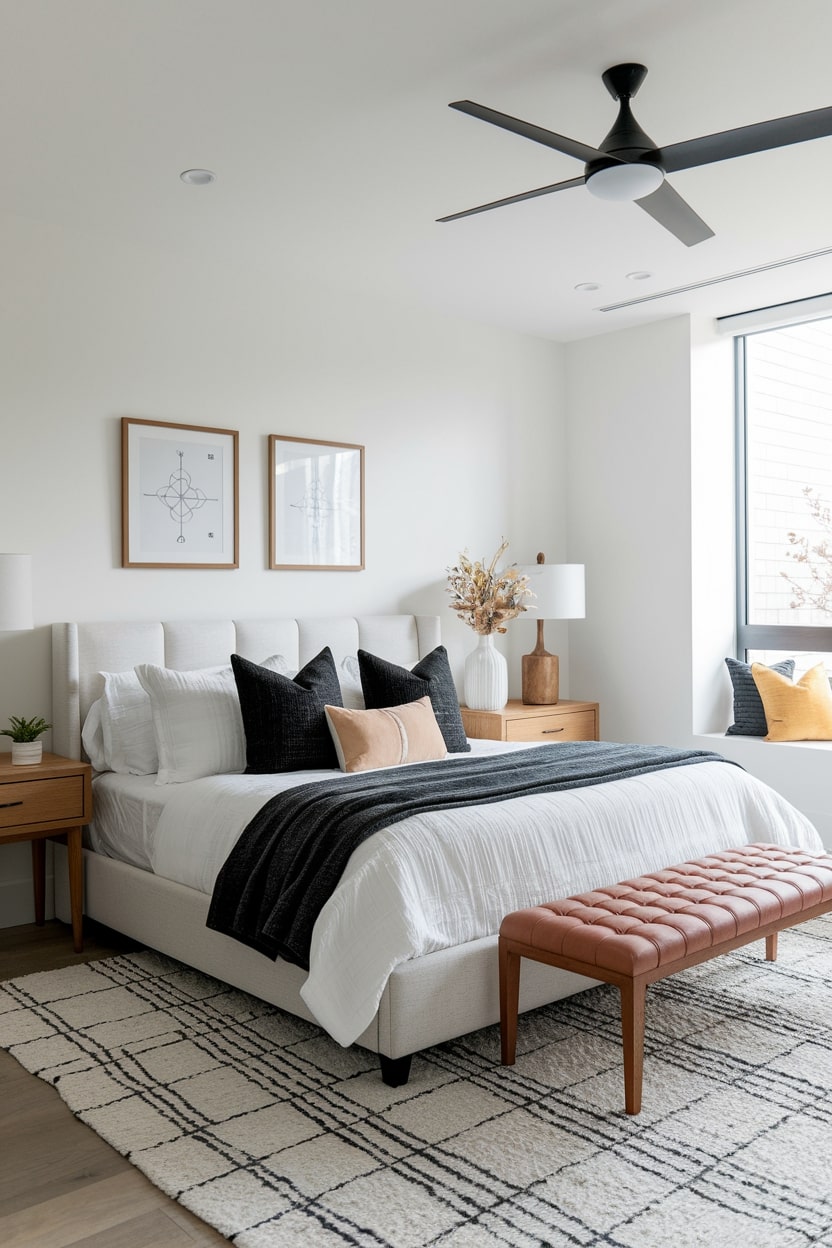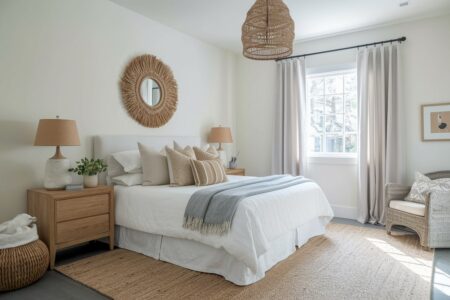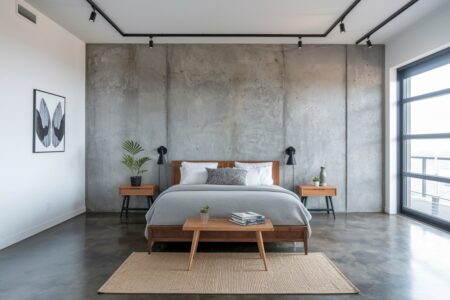In the world of real estate and home design, the term “master bedroom” is frequently used, but what does it truly signify? For many homeowners, it represents more than just a place to sleep. It is a private sanctuary, a personal retreat designed for rest, relaxation, and rejuvenation away from the demands of daily life.
But the concept has evolved. While it traditionally refers to the largest and most well-appointed bedroom in a house, its definition is becoming more fluid, encompassing a specific set of features that prioritize comfort and privacy. This guide explores the essential characteristics that define a modern master bedroom and offers practical tips for designing a space that feels like your own personal haven.
RELATED: 20 Master Bedroom Ideas: Your Guide to a Dreamy Retreat
Modern Definition of a Master Bedroom
At its core, a master bedroom is the principal bedroom in a home, typically occupied by the head of the household. It stands apart from other bedrooms due to its generous size, superior amenities, and strategic location within the house.
In recent years, the term “primary bedroom” has gained popularity as a more inclusive and descriptive alternative. This shift in terminology reflects a move away from historical connotations while still accurately describing the room’s function as the main sleeping quarters. Whether you call it a master or primary bedroom, the purpose remains the same: to provide a spacious and private suite for its occupants.
Key Characteristics of a Master Bedroom
While every home is different, several key features distinguish a master bedroom from a standard guest room or children’s room.
1. Generous Square Footage
The most noticeable characteristic is its size. A master bedroom is almost always the largest bedroom in the house. This ample space allows for more than just a bed and a dresser; it provides room for additional furniture and creates a sense of openness and luxury. The extra square footage is foundational to creating a multi-functional retreat.
2. An En-Suite Bathroom
A private, attached bathroom, known as an en-suite, is a hallmark of a true master bedroom. This feature offers the ultimate in privacy and convenience, eliminating the need to share a bathroom with other family members or guests. Modern master bathrooms often include premium fixtures such as a double vanity, a walk-in shower, a separate soaking tub, and high-quality materials for a spa-like feel.
3. Ample Closet Space
Superior storage is another defining element. While a standard bedroom may have a small reach-in closet, a master bedroom often boasts a spacious walk-in closet. This provides extensive room for clothing, shoes, and accessories, helping to keep the main bedroom area organized and free of clutter. A well-organized closet contributes significantly to the serene and orderly atmosphere of the entire suite.
4. A Designated Seating Area
The luxury of additional space allows for the creation of a dedicated seating area. This can be as simple as a comfortable armchair and ottoman in a corner for reading or as elaborate as a small sofa and coffee table. This zone transforms the bedroom from a purely functional sleeping space into a versatile lounge where you can unwind, have a quiet conversation, or enjoy your morning coffee.
5. Desirable Location and Views
Architects and builders often position the master bedroom in a prime location within the home. This might be at the back of the house for reduced noise, on a corner to allow for windows on two walls, or in a spot that offers the best possible views of a garden, cityscape, or natural landscape.
Tips for Designing Your Master Bedroom
Creating a functional and beautiful master bedroom involves a thoughtful approach to design and decor. Here are some tips to help you craft your ideal space.
- Select a Soothing Color Palette: The colors you choose have a significant impact on the room’s mood. Opt for calming and restful hues like soft blues, gentle greens, warm grays, and classic neutrals. These shades promote relaxation and create a peaceful backdrop for your furnishings.
- Layer Your Lighting: A successful lighting scheme includes multiple sources. Start with an overhead ambient light source, such as a chandelier or flush-mount fixture. Add task lighting with bedside lamps for reading and accent lighting with dimmers to create a soft, relaxing glow in the evening.
- Invest in a High-Quality Bed: The bed is the undisputed centerpiece of the master bedroom, so it’s wise to invest in the best mattress, pillows, and bedding you can afford. A comfortable and supportive bed is essential for a good night’s sleep, while luxurious linens elevate the entire experience.
- Create Functional Zones: Use furniture and decor to delineate different areas within the bedroom. An area rug can anchor a seating area, while a stylish bench at the foot of the bed can serve as a transition point to the dressing area. This approach enhances functionality and makes the large space feel more intimate.
- Prioritize Storage and Organization: A clutter-free environment is a peaceful one. Maximize your walk-in closet with smart organizational systems. Select nightstands and dressers with ample drawer space to keep surfaces clear. An organized space feels larger, looks cleaner, and is more conducive to relaxation.
- Personalize with Meaningful Decor: Finally, make the space your own. Hang art that you love, display cherished photos, and incorporate decor that reflects your personal style. These unique touches are what transform a well-designed house into a home.
Ultimately, a master bedroom is a deeply personal space. By understanding its defining characteristics and applying thoughtful design principles, you can create a private, comfortable, and stylish retreat that serves as your perfect escape.








